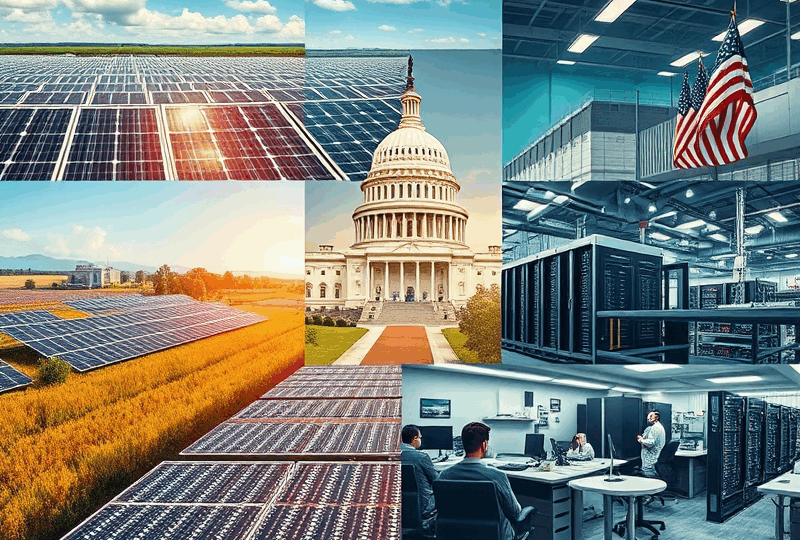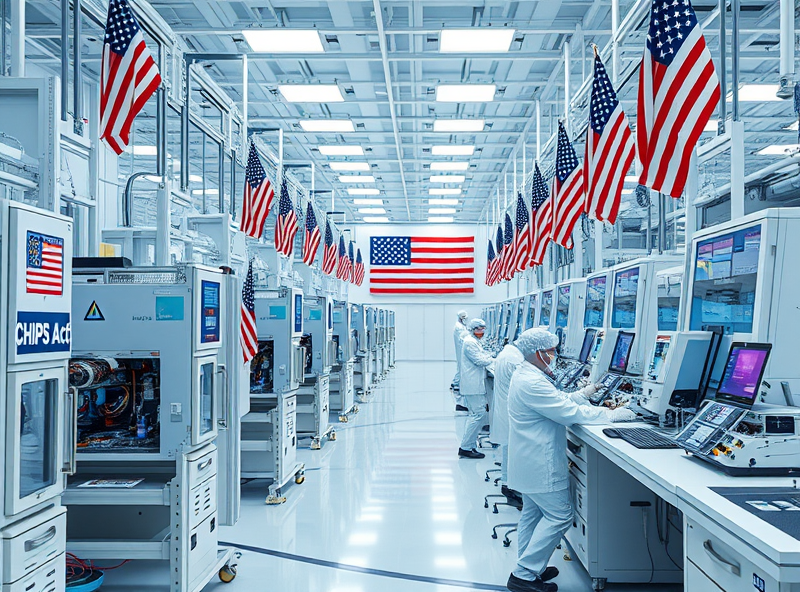
Targeted U.S. Government Subsidies for Key Industries
Clean Energy Subsidies and Their Impact on U.S. Innovation

Clean energy subsidies in the United States have become a cornerstone of national policy aimed at reducing carbon emissions and fostering technological innovation. These subsidies, which include tax credits, grants, and loan guarantees, are designed to lower the cost of developing and deploying renewable energy technologies such as solar, wind, and advanced battery storage.
One of the most significant impacts of these subsidies is their role in accelerating innovation. By reducing financial risk, they encourage private companies and startups to invest in research and development. For example, the Investment Tax Credit (ITC) and the Production Tax Credit (PTC) have been instrumental in making solar and wind energy more cost-competitive, leading to a surge in clean tech patents and job creation in the renewable sector.
Moreover, subsidies have helped build a robust clean energy ecosystem in the U.S., attracting venture capital and enabling public-private partnerships. According to the U.S. Department of Energy, clean energy jobs grew faster than overall employment in recent years, largely due to federal and state-level support.
However, it’s important to ensure that these subsidies are targeted effectively. Misallocated funds can stifle competition or support outdated technologies. Transparent criteria and regular performance reviews are essential to maximize the return on public investment.
For individuals and businesses, understanding these subsidies can lead to significant cost savings and opportunities for innovation. Whether you’re a homeowner considering solar panels or a startup developing green tech, staying informed about available incentives can be a game-changer.
For more information on federal clean energy incentives, you can visit the U.S. Department of Energy’s official site: https://www.energy.gov/eere/funding
Tech and Semiconductor Incentives Fueling Domestic Manufacturing

In recent years, the U.S. government has significantly increased its support for domestic technology and semiconductor manufacturing. This strategic move aims to reduce reliance on foreign supply chains, enhance national security, and stimulate job creation across the country. One of the most impactful initiatives is the CHIPS and Science Act, signed into law in 2022, which allocates over $52 billion in subsidies and tax incentives to boost semiconductor production within the United States.
These incentives are not just about funding—they’re about building a resilient and innovative tech ecosystem. For example, companies like Intel, TSMC, and Micron have announced multi-billion-dollar investments in new fabrication plants (fabs) in states like Arizona, Ohio, and New York. These projects are expected to create tens of thousands of high-paying jobs and revitalize local economies.
Beyond semiconductors, the government is also offering grants and tax credits to encourage research and development in advanced manufacturing technologies, including AI, quantum computing, and clean energy tech. These efforts aim to ensure that the U.S. remains competitive in the global tech race and can meet future demand for cutting-edge technologies.
For professionals, entrepreneurs, and students, this shift presents a wealth of opportunities—from careers in engineering and manufacturing to startups developing next-generation hardware. Staying informed about these incentives can help individuals and businesses align their goals with national priorities and tap into new funding sources.
To learn more about the CHIPS Act and its implementation, you can visit the official U.S. Department of Commerce page: https://www.commerce.gov/chips-act
Future-Focused Programs for AI, Quantum, and Frontier Technologies

To maintain global leadership in innovation, the U.S. government is strategically investing in emerging technologies such as artificial intelligence (AI), quantum computing, and other frontier tech. These targeted subsidies are not just about staying competitive—they’re about building a resilient, future-ready economy.
One of the most significant moves is the CHIPS and Science Act, which allocates over $280 billion to strengthen domestic semiconductor manufacturing and fund research in AI and quantum technologies. This initiative aims to reduce reliance on foreign supply chains and accelerate breakthroughs in critical areas like machine learning, cybersecurity, and quantum encryption.
The National AI Initiative, led by the White House Office of Science and Technology Policy, coordinates federal efforts to promote AI research and workforce development. It supports partnerships between academia, industry, and government to ensure ethical and inclusive AI innovation. These programs are designed to help small businesses and startups access federal resources, ensuring that innovation isn’t limited to large corporations.
Quantum computing is also receiving dedicated support through the National Quantum Initiative Act. This program funds quantum research centers across the country, fostering collaboration between universities and tech companies to advance quantum communication and computing capabilities.
For individuals and businesses, these programs mean more opportunities for high-paying jobs, increased access to cutting-edge technologies, and a stronger national economy. If you’re a student, entrepreneur, or tech enthusiast, now is a great time to explore how these federal initiatives can support your goals.
For more information, you can visit the official National AI Initiative website: https://www.ai.gov/
Policy Efficiency and Global Competition in Industrial Subsidies

In recent years, the U.S. government has increasingly focused on targeted subsidies for key industries such as semiconductors, clean energy, and advanced manufacturing. These subsidies aim to strengthen domestic capabilities, ensure national security, and maintain a competitive edge in the global economy. However, the effectiveness of these policies depends on how well they are designed and implemented.
One of the most critical aspects of policy efficiency is ensuring that subsidies lead to measurable outcomes—such as job creation, technological innovation, and reduced dependency on foreign supply chains. For example, the CHIPS and Science Act of 2022 allocated over $50 billion to revitalize the U.S. semiconductor industry. This investment is not just about money—it’s about creating a resilient ecosystem that supports research, development, and workforce training.
Globally, countries like China, South Korea, and members of the European Union are also ramping up industrial subsidies. This has led to a form of subsidy competition, where nations race to attract high-tech industries and talent. To stay ahead, the U.S. must not only invest wisely but also ensure transparency, accountability, and alignment with long-term economic goals.
For individuals and businesses, understanding these subsidies can offer opportunities—whether through new job openings, research grants, or partnerships with government-supported initiatives. Staying informed about these policies can help you make strategic decisions in a rapidly evolving economic landscape.
For more on U.S. industrial policy and subsidies, you can visit the Congressional Research Service: https://crsreports.congress.gov/product/pdf/IF/IF12227







